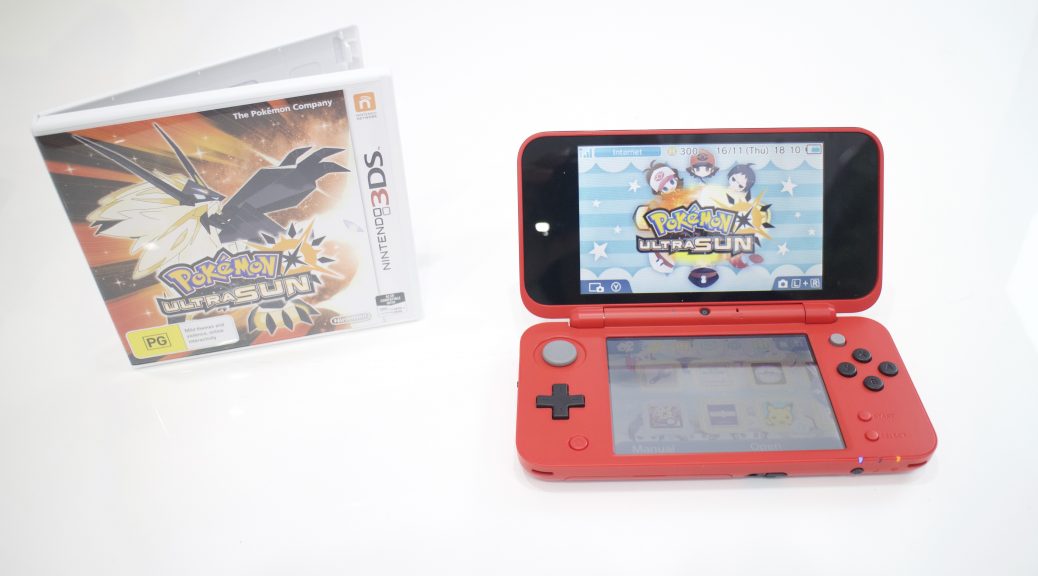Alola, Ultracharged — Daily’s Pokémon Ultra Sun and Ultra Moon Review
Whether you’ve played Sun and Moon or not, Pokémon Ultra Sun and Pokémon Ultra Moon have something to offer for fans and newcomers alike.
Grab Bag
Same sounds of Alola
Most of the music from Pokémon Sun and Moon are back — a remixed version of the Alola Region Theme, along with some of the towns and the “Item Get” fanfare retain the Hawaiian-style influences you might have heard from the base games. Pokémon Ultra Sun and Ultra Moon shake things up a little bit though, as the Wild Pokémon and Trainer battle themes play more traditional riffs. A few other tracks have had new segments added to them to help convey the Alolan feel, but the best music may be found much later in the game, such as the battle theme for certain legendary Pokémon. Without spoiling when you’ll hear it, the theme comes at a dark moment of the game, and it gives off a real sense of urgency and fear.
The epic themes against Team Rainbow Rocket’s bosses are also a notable addition to the soundtrack. None of these themes have been recycled from previous games, but instead are remixes incorporating familiar sounds. This is both good and bad, as some of the tracks lose their familiarity and seem less menacing — Cyrus’s theme, in particularly — while some much better emphasize their characters and their personalities — Lysandre’s and Ghetsis’s themes, in particular.
If you love nostalgia, these games also give the previous-generation legendary Pokémon their battle themes as heard in previous titles. These tunes have been reproduced almost exactly the same as their source material. White it would’ve been nice if these were recomposed like the Rainbow Rocket boss themes, the legendary Pokémon appearances in these games are more like a guest stint anyway.
You’ll want to plug in some headphones when you start your playthrough. The new tracks add great music to a game with an already high-quality soundtrack, so you’ll find plenty to appreciate.
Totem Stickers everywhere
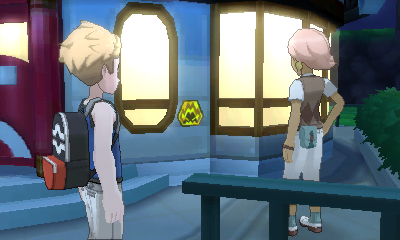
Replacing the tedious-to-collect Zygarde Cells are Totem Stickers, which the Trial Captains have stuck all over the region. Like the Cells, there are 100 to collect, and it’s not as tedious — the stickers blend in less with the environment and they sparkle brightly, so as long as you’re looking at the right angle, you’ll be able to find them easily.
Hand enough of these stickers to Samson Oak — Professor Oak’s cousin as seen in Sun and Moon — and he’ll give you Totem-sized Pokémon similar to the ones you encounter on your journey. Since these are evolved Pokémon, these Pokémon may help you with your capture count for the Pokédex, too. These Totem-sized Pokémon aren’t particularly different stat-wise (as gifted Pokémon, they appear to have a minimum of three base stats maxed out) but when sent into battle, you’ll definitely notice how large they are. Unfortunately, as they’re really just Totem-sized, they don’t receive a stat boost when sent into battle, so they’re really just a visual treat.
With a hundred stickers in the game though, it would make sense for there to be an in-game list to help track locations down, but there’s no such a list nor is there a way to check exactly how many you have at any given time without seeing Samson himself. Collect-a-thon quests in many games with large amounts of items try to assist players in locating these sorts of items — annoyingly enough, Game Freak hasn’t caught onto this helpful trend, and after Sun and Moon, it would’ve been nice if they had.
If you’re trying to complete your Dex, the Totem Stickers offer a tangible reward in the form of various Totem Pokémon. The size distinguishes them in battle, but it’s up to you if you’d really use them yourself. You may find collecting stickers a little more interesting than collecting Zygarde cells, but you might also find it to be a chore.
Battle Agency
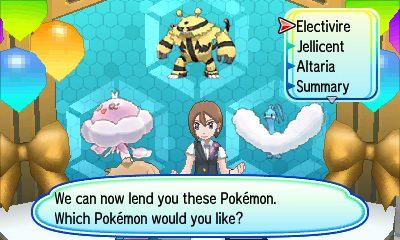
If you were a fan of the Battle Factory from Pokémon Emerald or Pokémon Platinum, a similar feature is here in Ultra Sun and Ultra Moon. The Battle Agency, unlocked in the Festival Plaza after Sophocles’ trial, allows you to pick one Pokémon from a random choice of three rental Pokémon, and battle with it against computer-controlled Trainers, much like the Battle Factory. As a part of Festival Plaza, it pushes a social aspect into the mix, too — like other facilities, you have a team of three.
The Battle Agency shakes things up by forming you with a team of two other Trainers, who can be visitors from your Festival Plaza. If you can’t make a team of three with plaza visitors, random Trainers will be added to your team. Any visitors in your plaza will be assigned a random Pokémon from a pool available to their rank.
While you don’t get Battle Points from the Battle Agency, your efforts do reward you with items as well as Festival Coins. You do get a cool pair of shades to use in the Battle Agency, too — though it’d be nice if you could wear them outside of it.
Battle Agency ends up being a fun facility if you enjoy using random Pokémon and trying out new strategies. Its link to Festival Plaza visitors, however, means that to make the most of it you’ll want to connect online or hang around high-ranked friends.
Snap a memory at the Alola Photo Club
Upon finishing the first trial, the Alola Photo Club opens up — with the first branch you encounter in Hau’oli City. This cute addition to the Pokémon games allows you to take a picture of your Pokémon and then apply stickers to the final image, which can then be seen by others via Festival Plaza.

The interface is appealing and intuitive to use, allowing players to change the position of the camera and the characters’ poses. More options such as changing the rotation and position of the Pokémon, as well as the camera angle, become available after your first photo. Additional backdrops to take the photo become available as you advance through the game.
For setting up a great photo, the interface is fairly flexible, with a few quirks. When a Pokémon is so big, it can sometimes be almost impossible to properly pose with it. Without changing the camera angle, it’s occasionally impossible to place the character closer to their Pokémon. And for whatever reason, it’s not possible to change the position on the “field” of the player character — only the Pokémon — which results in some shots taking a bit more effort to produce than needed.
Once you’ve taken your first photo, you’re given a Photo Album to customize these photos as you please. You can apply stickers with text or zany effects, and add borders for additional effect. More content becomes available as you play through the game and earn it from certain characters. The kinds of photos can range from sensible to strange to outright weird, if you so choose, and the stickers, dialogue and borders can better emphasize the effect. Have fun!
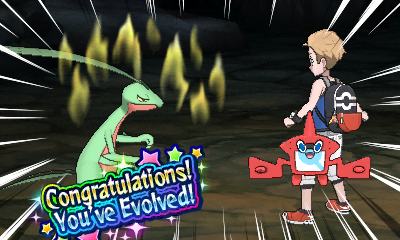
Photos don’t have to be taken just at the Photo Club buildings, either — upon a Pokémon evolution, Rotom may offer to take a photo just about anywhere. This does raise the question as to why you can’t just activate it any other time — remembering the Rotom Pokédex does have a camera feature. Being unable to take pictures at any given time just makes the games feel a bit less immersive — in a world where we regularly run around with smartphones taking selfies at a moment’s notice, it’s a little strange that evolution is the only time you can randomly do so yourself in the Pokémon world.
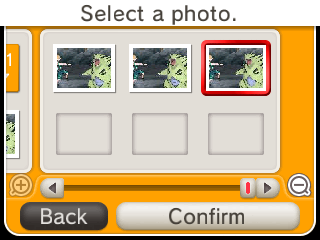
The photos are also saved to your SD card, so the photos you take can easily be shared on the internet. You can also launch Nintendo 3DS Image Share from the 3DS internet browser to post the images you’ve taken onto Facebook or Twitter. (This is done manually via i.nintendo.net, as the games don’t have a built-in link to it unlike Nintendo’s first-party titles.)
Rock on, Tyranitar! #3DS pic.twitter.com/Vwr26lNtcL
— Anthony La (@Yarravillain) November 22, 2017
The little things
Pokémon Ultra Sun and Ultra Moon offer little things for every Pokémon fan. The same bells and whistles from Sun and Moon are here to stay — the simplified Pokémon storage system, the Pokémon Centers with their marts and cafés, Pokémon Refresh, Ride Pokémon and other welcome moves make it really hard to play the older Pokémon games, so it’s great to see them here once again, and it’s great to see that Ultra Sun and Ultra Moon add a few more neat little features to the mix.
A notable improvement from Sun and Moon is that areas that can induce Pokémon evolution have been made accessible earlier. If you’re trying to evolve a Charjabug or a Magneton, you can now do so at Blush Mountain rather than all the way at Vast Poni Canyon. You can also evolve Crabrawler at the foot of Mount Lanakila, as the entrance to the area is no longer blocked.
As we mentioned earlier, certain moves can now be taught by the move tutors found at three of Alola’s beaches. This means any Pokémon you’ve been breeding exclusively from the seventh generation, as well as Pokémon only introduced in this generation, can now learn new moves. Examples include Magic Room, Zen Headbutt and Stealth Rock. For those in the competitive battling scenes, this will open up new strategies to one-up opponents, particularly for the Pokémon introduced in this generation.
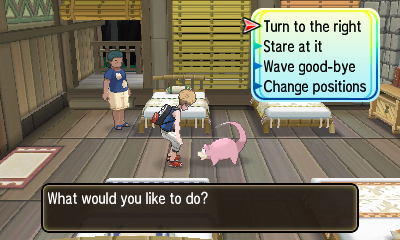
Alola now gets to be one of the only regions that puts select Pokémon out on the field that you can interact with — but they aren’t yours, sadly. Scattered around Alola are various Pokémon who love interacting with other trainers, and if you interact with them enough, they’ll love you back, too. You can interact with these Pokémon by walking around with them, spinning around, playing peek-a-boo or staring at them. As wonderful as this sounds, it gets old really quick — most of the Pokémon you see act the same. Only a few have some neat little quirks, such as a slow-moving Slowpoke or a Starmie spinning around to get to you. They also interact the same, and there’s little payoff for earning their affections — it’d be cool if their Trainer traded the Pokémon to you, for instance, but this simply doesn’t happen. The interactions with Pokémon end up being a nice world-building activity with little to gain and a lot of time taken up — and it certainly should leave you wondering why you can’t interact the same way with your own Pokémon. Particularly egregious is the fact even Hau’s Pokémon runs around with him!
The game also throws in a few bonus events that happen only on certain times of the day. A few offer a reward, and a few are just there to expand the world. It would’ve been nice to throw in some more events — perhaps fetch quests or short side-quests — just to keep players exploring the region, but these time-based events do at least help make the Alola region feel that little bit more immersive.
